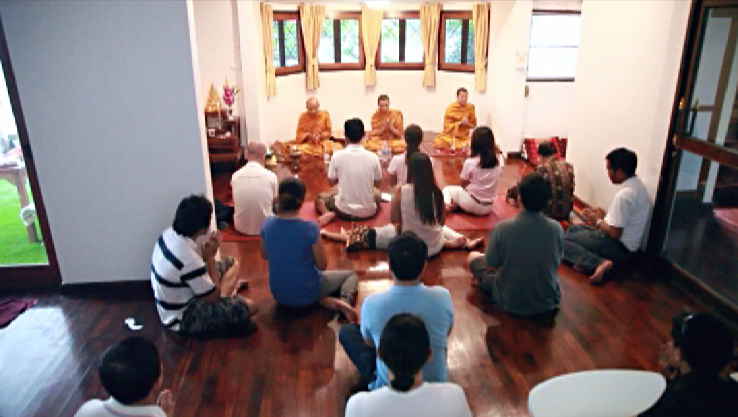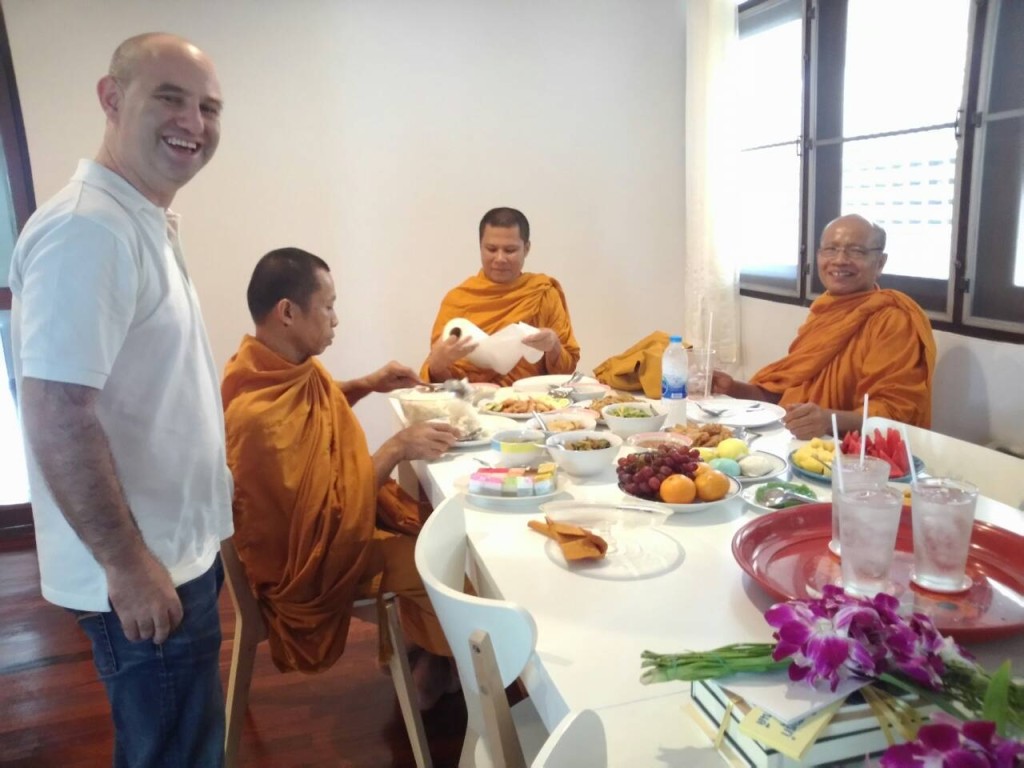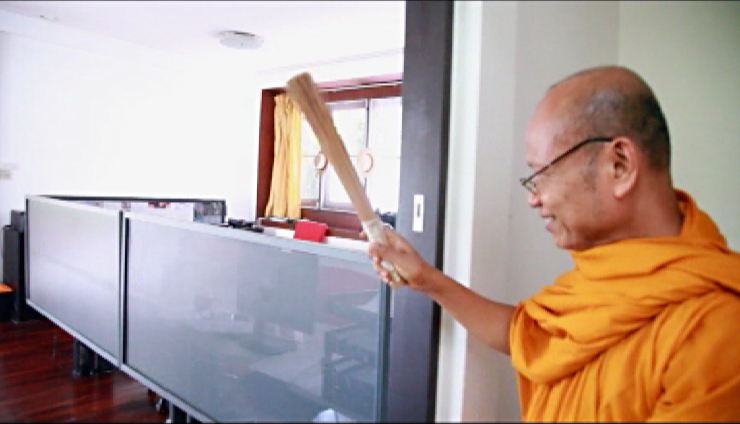Tuk Tuk Tours
Explore Bangkok by the iconic tuk tuk
Expique just had one so let's share with you!
Last month Expique had a Tamboon-Baan at our office, but do you know what a “Tamboon-Baan” of the Thai is? Or even “What the heck is Tamboon”?
Tamboon in Thai literately means “make merit” – Tam means “make” and Boon means “merit”. But how can someone make a merit? That’s an interesting question, isn’t it?
Tamboon in Thai’s perception is very much linked to doing all good sorts of things in religious related activities. For example, donating money to temples or monks, but most of the times donating to charities is also considered Tamboon. Also releasing animals, such as fish, birds and turtles is also considered Tamboon. Some Thai temples would even have a donation box for the fund to buy the cows, and cows bought will be released back to the wild thus exempted from being killed.
So does that mean we have to have money to be able to make merit?
Not exactly, the quick way to make a merit in Thai is obviously giving away money for good causes but if you don’t have money, Tamboon is also considered made when you meditate and / or follow the religious rules like 5 simple Buddhist rules of.
The reason being, when you do good things or refrain from doing not-so-appropriate things, your mind and your soul becomes purer thus “Boon” is generated.
So Tamboon-Baan? What does it means?
As you might have already know, “Baan” is house / home in Thai; therefore, Tamboon-Baan could be translated as doing all good things (religious related) to the house / home or even offices. Tamboon-Baan is normally made when people move in to the new place regardless of whether the place is newly built or not.
What is the process of Tamboon-Baan then?
The day before the ceremony, the owner of the house would set-up a white thread called “Sai-sin”. Normally Sai-sin is used a a representative of sacred materials. Any religious ceremony finishes by monks giving away small amount of “Sai-sin (white thread)” for people to take home or use it as a wrist-band to bring luck and to protect them from bad things. Same as other ceremonies, the “Sai-sin” is set-up to encompass the whole house in order to mark the territory that will be blessed and therefore free from bad spirit. It’s not necessary to cover the entire house with sai-sin, some would only bring the roll of thread to be presented during the chanting and keep the tread within the house in order to bring luck to the place as well.

The golden rule of a Tamboon Baan is monks are invited to visit the place, to pray at the place, to eat at the place and also to bless the place. This is considered the process in order to bring all goodness to the house and also to eliminate bad spirits that are already there or coming there. The monks will perform chanting, this is to inform all the bad spirits around the house to realise that the place is being blessed and therefore they should not come in or they shall leave.
The owner of the house will prepare food for the monks, themselves and the guests they invite to join the ceremony. As monks can only eat 2 meals a day (breakfast & lunch) and they must also eat before noon; generally the Tamboon-Baan is therefore performed in the morning.

After chanting, monks are invited to eat. Normally, the owner will prepare a separate meal (with special seatings) for them, and will physically hand each plate of food to the monks for them to receive it. After the meal, monks will perform another chanting – pretty much to say “Thank you”. The process of giving “Sang-ka-tarn” is also performed at this stage. Sang-ka-tarn is more or less a kind of providing souvenir for the monks to keep. But what souvenir would monks need? Well obviously it must be something that they can use. As a result, Sang-ka-tarn is mostly done with some toiletries, dry-food, money, medicines, monks’ clothes etc packed in a yellow bucket for monks to take back to the temple. As only men can touch the monks, therefore giving the Sang-ka-tarn bucket is mostly done by men or if no men around, monks normally have a small piece of cloth where women (giver) put the yellow bucket or whatever they want to give on to that cloth and this is considered given. No touching is allowed.
After “Sang-ka-tarn” is given, the last and most important process of the Tamboon-Baan is performed. This process is called “Kroudd-Naam”. “Naam” means water in Thai. Kroudd Naam therefore means pouring water and sending / sharing goodness to the spirits being involved in ones’ life. Thais believe spirits are everywhere, we just don’t see them. Have you ever heard “sharing is caring”? Yes, this applies also to the Thai Buddhist culture. Kroudd-Naam is the process where ones pouring water into a small bowl while monks chanting special Kroudd-Naam records, people gather up during chanting and connect (physically) to each other in order to assemble the willingness to share the goodness that they have just done to any spirits they want to and/or any spirits close by.
The first person in the chain pours water into the small bowl and others who don’t get to pour the water will touch that person that pours the water or someone else who is touching that person. This sounds complicated but actually it is a chain of connections and this chain connects their willingness to give. Any Tamboon will not be considered completed if “Kroudd-Naam” is not performed. The sharing principles lie among all religious Thais.

But why did Expique do this?
Tamboon-Baan goes beyond the Baan (house/home) itself. Tamboon-Baan is regularly performed as well when a new business is started in a new office or the existing business is moved into a new office. Some people actually call this a Taboon-Office. The Thai believe being blessed by the monks in their own house is a good thing, why not extend that to the office as well? Fair enough, isn’t it?
Interestingly, a lot of old businesses will perform the Tamboon whenever they feel like, the time has come. This means whenever the business is not going well, or even when they feel like they need a new start – pretty much like a “reset” button. You press it with the hope that everything starts all over again and therefore all goodness comes.
Check out the video of the Expique Tamboon Baan
To learn more about Thai culture and customs come on a Bangkok Tour with us.